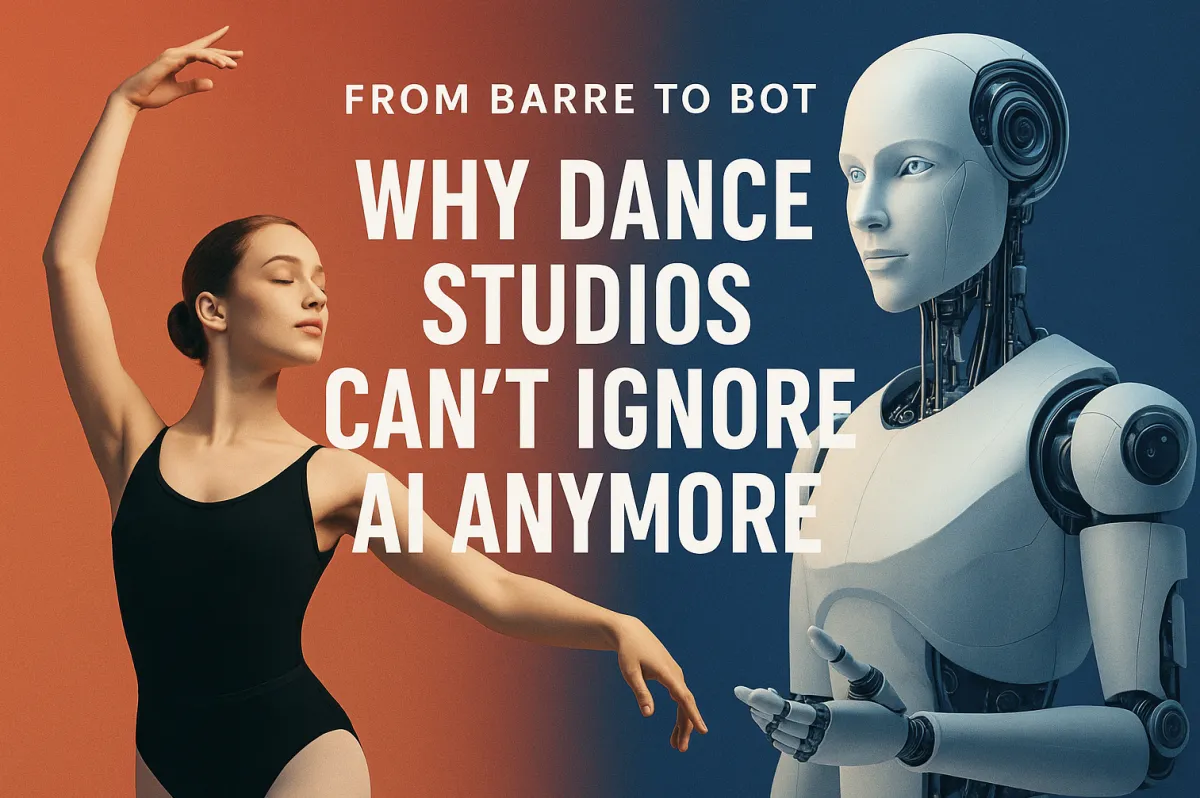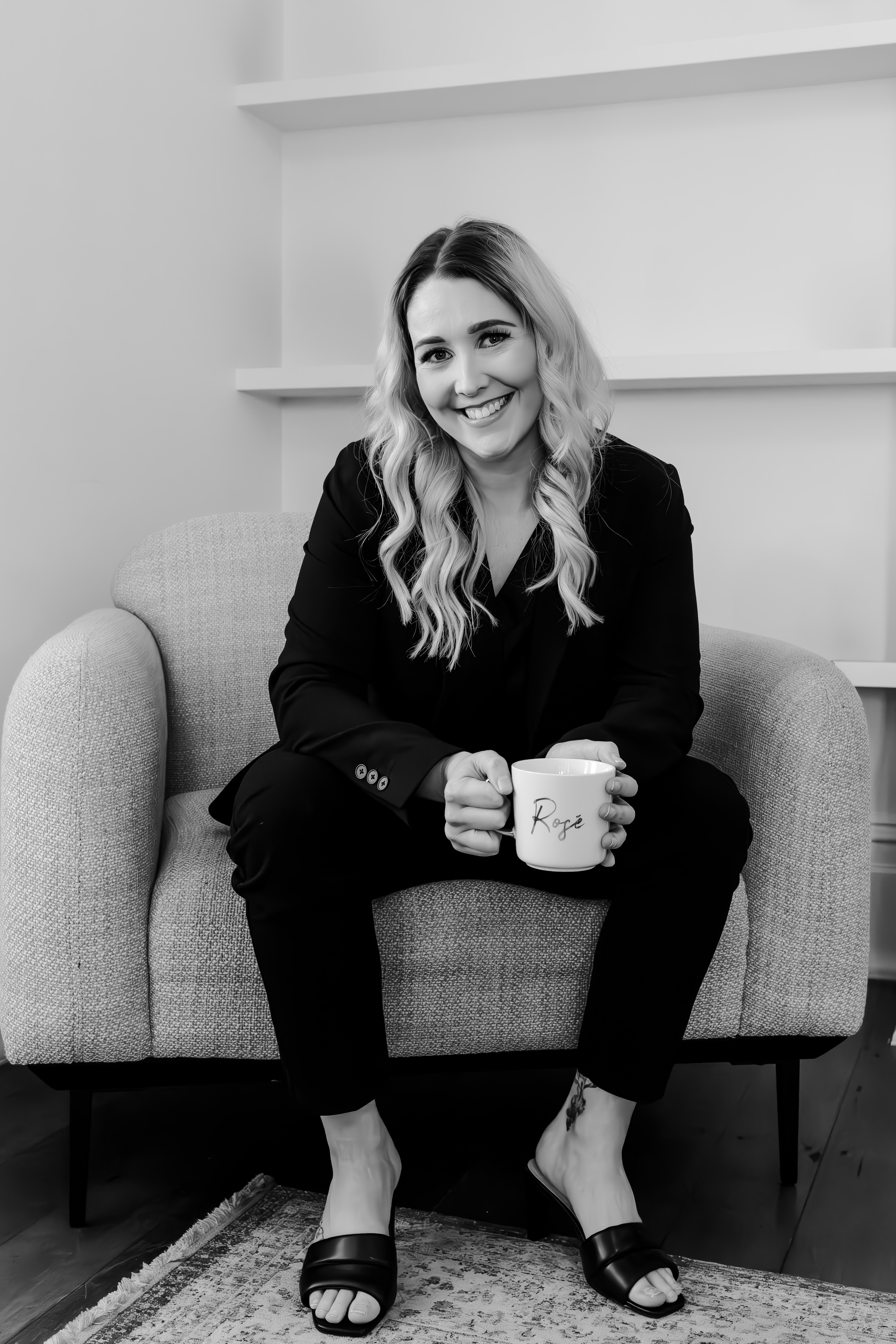
From Barre to Bot: Why Dance Studios Can’t Ignore AI Anymore
Artificial Intelligence isn’t coming for the dance world—it’s already here.
And while it won’t teach a plié or stand in the wings to calm a nervous dancer, it is reshaping how studios and dance businesses overall operate, communicate, and grow. Whether we like it or not, the business of dance is evolving—and our industry can’t afford to sit this one out.
We are standing at a crossroads. On one hand, we have a field rooted in tradition and human connection—where learning happens through physical presence, correction, encouragement, and repetition. On the other, we face increasing demands for digital fluency, rapid response, personalised communication, and smart systems that go far beyond the studio floor. AI now sits at the centre of that tension—not to replace the artistry or empathy of dance education, but to reimagine what’s possible in the way studios are run.
Rather than being a distant trend or tech-world novelty, Artificial Intelligence is increasingly becoming a tool of relevance for small creative businesses here in Australia. While adoption across the performing arts sector has been slower than in other industries, the conversation is gaining traction—particularly as studio owners look for ways to navigate increasing demands on their time, team, and resources.
The dance industry is at a pivotal moment: facing greater competition, rising operating costs, and evolving parent expectations, all while still recovering from the disruptions of recent years. As the administrative and marketing pressures on studio leadership intensify, AI is starting to emerge not as a replacement for people—but as a practical way to preserve the energy and focus needed to lead.
Still, in the dance sector, adoption remains cautious. Understandably so. Ours is a community built on presence—on the in-between moments, the eye contact, the trust built class after class. AI can’t replicate that. But it can make more space for it.
Every studio owner understands the administrative weight that sits just below the surface of performance season, exam preparation, and day-to-day teaching. Emails, enrolment processes, policy updates, concert logistics, social media captions, digital scheduling, and follow-up messages—all competing with the real work of creating safe, empowering spaces for dancers to grow.
This is where AI becomes not a threat, but a solution. Tools like ChatGPT, Grammarly, Jasper, Canva’s Magic Write, and Notion AI are now being integrated into everyday studio workflows—quietly but powerfully. Not to run the show, but to reduce the operational friction so common in small, overstretched creative businesses.
Take something as simple as the enrollment season. Instead of writing ten variations of the same parent email, studio owners can now use AI to draft personalised welcome messages, generate follow-up sequences, and even help design the structure of trial booking forms. Used correctly, these automations don’t replace the personal touch—they reinforce it through consistency, clarity, and timeliness.
The same applies to marketing. In a world where most parents are choosing activities based on what they see online, it’s no longer enough to rely on word-of-mouth. According to HubSpot’s 2024 State of Customer Service report, 82% of consumers expect their issues to be resolved immediately, and 78% expect more personalised service than ever before. That expectation for instant, tailored communication doesn’t disappear when families choose a dance studio—it becomes part of what defines whether or not they stay.
This presents a clear opportunity for studio owners willing to reframe how they use technology. AI-generated content isn’t about abandoning your brand voice. It’s about removing the blank page. It gives structure to social media campaigns, caption ideas based on trending content, and draft blog posts that can then be refined. Studios that previously relied on spontaneous, last-minute content can now build consistent, thoughtful marketing calendars—without burning out their already time-poor teams.
Where this becomes transformative is in the way it supports leadership. When studio owners aren’t drowning in repetitive admin tasks or scrambling for last-minute promotions, they can focus on retention, team culture, curriculum development, and student experience—all of which are proven to drive long-term sustainability.
Of course, there are valid concerns. Misuse of AI has raised important ethical and professional questions across industries. In the education space overall, there's fear that over-automation might reduce quality, remove critical thinking, or erode the relationship-building that lies at the heart of teaching. These are not unfounded. But these risks lie not in the tools themselves—but in how they are used.
Professionalism and discernment are essential. Studios must maintain rigorous oversight over how AI-generated content is reviewed, approved, and applied. Data security and student privacy must remain protected. Communication should still feel human, regardless of how it's constructed. The point isn’t to sound robotic or disconnected from your brand voice. It’s to ensure every family feels seen and supported—even when your team is stretched.
This conversation also invites a deeper question about the evolving role of studio leadership. Historically, many studios have relied on passion, flexibility, and community reputation to drive growth. But today’s studio owners are expected to operate more like CEOs—leading people, processes, and platforms with strategic direction. AI can’t provide that leadership. But it can support it—by helping owners make faster, more informed decisions, maintain communication standards, and introduce structure where there was once chaos.
This is especially relevant as the burnout rate among performing arts professionals continues to climb, driven by unsustainable workloads, admin pressure, and limited professional support. AI alone won’t fix this. But it can form part of a broader solution to reduce unnecessary labour and protect energy for higher-impact work.
So what does responsible AI adoption look like in a studio context?
It’s not about replacing humans. It’s about complimenting them.
It’s not about automating everything. It’s about automating the right things.
And it’s not about racing to adopt every tool. It’s about identifying your pressure points—where communication falls through the cracks, where duplication creeps in, where admin overwhelms artistry—and introducing tools with purpose, not panic.
It might look like a studio using AI to draft internal policy handbooks that have been years overdue. Or building caption templates for concert season that reflect their values and tone. Or using an AI assistant to transcribe meeting notes, freeing up focus for creative planning. These tools aren’t glamorous. But they’re effective.
Ultimately, the role of AI in dance won’t be to lead—it will be to lift. To give studio leaders space to breathe, think, and build. To give teachers more time to reflect and prepare. And to give students an experience that isn’t diluted by disorganisation, but deepened through intentional delivery.
The future of the dance studio isn’t going to look like the past. That doesn’t mean we’re losing our roots—it means we’re evolving them. And as technology continues to change the business landscape, our responsibility is not to resist it out of fear, but to engage with it thoughtfully and strategically.
Dance is, and always will be, a profoundly human experience. AI can’t replicate the thrill of a final pose, the mentorship built over years, or the unspoken connection between a teacher and student in motion.
But it can help ensure those moments aren’t lost in the noise of everything else.
The question for today’s studio owner isn’t, “Should I use AI?”
It’s, “How can I use it to do what I do—better?”
Kelly Groves
Dance Business Strategist and Consultant
www.kellygroves.com.au
